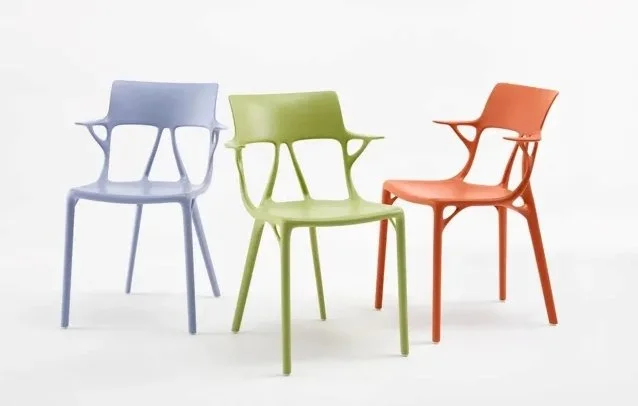Innovate (Safely) and Thrive
In a spurt of spontaneity, I found myself at BYU’s Cougar Skate event a few weeks back. I’d never been rink skating before, but my previous experiences with inline and ice skating left me with enough confidence that I didn’t look up any tutorials before heading for the Wilkinson Student Center. Though, I think my tailbone would’ve thanked me if I had. At one point during the night, as I was trying to slow down, I leaned backward — a critical error. At that moment, all of my weight was centered over a set of very low-friction wheels, and the next, I was on the ground nursing a very sore rear end. Thankfully, the pain was temporary, and I was happily skating a minute later. I couldn’t help but wonder, though, if my fall had more to do with my inexperience or the placement of those rear wheels.
One thing is for sure, though: skating injuries are not uncommon. One of the first results from a simple google search was a Reddit post titled “Tailbone pain and fear of skating again” [1]. However, the crux of the matter is that these injuries aren’t ordinary and/or severe enough to necessitate an alteration in roller skate design. While placing the rear wheels directly under the heel facilitates the dancing and tricks that make skating so popular, they require the user to adopt an active position in which their weight is shifted slightly forward. The moment their center of balance moves above or behind the heel, skaters can easily find themselves falling to the floor in classic cartoon-banana-peel fashion. Hence, we find ourselves with a perceived conflict between user safety and design intent.
This contention is present in every sphere of design, whether in bioengineering, public transport, or even artificial intelligence, and is best described as the limit we impose on the capacity of a product to prevent the catastrophe that would otherwise occur from misuse or abuse. For example, reporters recently shared that cybercriminals had used OpenAI’s ChatGPT to successfully create strains of malicious software [2]. Additionally, many have voiced concerns over ChatGPT’s writing ability and the potential for plagiarism in the academic arena [3]. This is not to say that ChatGPT is without limits. On the contrary, OpenAI clearly delineates what their chatbot will and will not do. But releasing such a potent tool to the public could easily be considered favoritism of innovation over caution.
ChatGPT (or AI, for that matter) has not been the only victim of the conflict between safety and functionality — all emerging technologies assume some amount of risk in their implementation — but that doesn’t mean we should stifle innovation in the interest of absolute safety. While some may declare, “Innovate or die,” we must know how to innovate safely to survive our creations.
A recent paper published in the International Journal of Environmental Research and Public Health posits that a potential solution lies in what they call “Safety-by-Design,” or, in other words, placing the safety of the product’s users at the center of development [4]. Safety by design relies upon the assumption that it is better to mitigate risk than react to it. The article’s analysis is quite comprehensive and even admits that due to the incredible variety between industries, there is no panacea for safe design. But, we can derive several generic strategies to ensure the safety of our products:
Step 1: Anticipate risks early and place their mitigation at the center of a product’s development [4].
Step 2: Actively discover environmental, physical, or social hazards during testing and modify the design as needed.
Step 3: Repeat Step 2 until risks have been acceptably marginalized.
Could applying these steps to roller skate design have saved me a sound thump on the rear that evening at the Cougar Skate? Probably. Skates designed around the safety of the user could feature a wheelbase extended in both directions to improve balance for novice skaters. This modification might impede advanced maneuvers, but it would likely succeed in preventing injury. Such a tradeoff need not apply to every possible skate configuration, either. There could easily exist a family of skate designs that cater to different skill levels. Roller skates are just one example of this principle. Whatever the product may be, though, there must be at least one configuration that minimizes risk to the user, even if it limits a product’s use. The world needs safety by design.
As we acknowledged earlier, human and nature’s complexities make eliminating hazards nearly impossible, especially for new technologies. However, safety by design allows us to proactively minimize those risks in the best possible way, bridging the gap between user safety and design intent and inoculating ourselves against the dangers of innovation. With safety by design, we can not only innovate and not die, but we can innovate, survive, and thrive.
References
[1] u/vppiazza. “Tailbone Pain and Fear of Skating Again; r/Rollerskating.” Reddit, 19 Feb. 2022, http://www.reddit.com/r/Rollerskating/comments/sw9dos/tailbone_pain_and_fear_of_skating_again/&sa=D&source=docs&ust=1677101607348170&usg=AOvVaw0QcISnSVyiAU53rIPK4eCg.
[2] Sergeyshy. “Opwnai: Cybercriminals Starting to Use Chatgpt.” Check Point Research, 15 Jan. 2023, https://research.checkpoint.com/2023/opwnai-cybercriminals-starting-to-use-chatgpt/.
[3] Barnett, Sofia. “ChatGPT Is Making Universities Rethink Plagiarism.” Wired, Conde Nast, 30 Jan. 2023, https://www.wired.com/story/chatgpt-college-university-plagiarism/.
[4] van Gelder, Pieter, et al. “Safe-by-Design in Engineering: An Overview and Comparative Analysis of Engineering Disciplines.” International Journal of Environmental Research and Public Health, U.S. National Library of Medicine, 11 June 2021, https://www.ncbi.nlm.nih.gov/pmc/articles/PMC8296130/.
To cite this article:
Ashby, Derek. “Innovate (Safely) and Thrive.” The BYU Design Review, 25 Feb. 2023, https://www.designreview.byu.edu/collections/innovate-safely-and-thrive.





